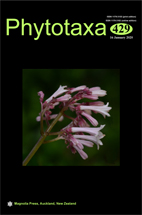Abstract
Pollen morphology of 46 species and 11 varieties representing the 5 currently recognized sections and 10 series of Stellaria from China was investigated. Pollen grains of Stellaria are radially symmetrical, apolar, small or medium in diameter, pantoporate, spheroidal or spheroidal-polyhedral and have 8–22 pores with prominent or sunken pore membrane. The ornamentation is microechinate-punctate, microechinate-perforate or microechinate-punctate-perforate. 8 pollen types are recognized, and significant differences in shape, size, pore number and ornamentation are found. Arenaria and Cerastium were proved to be related to Stellaria, whereas Myosoton was suggested to be merged into Stellaria. The pollen morphological features indicated Stellaria was in a middle evolutionary position of the family Caryophyllaceae.

